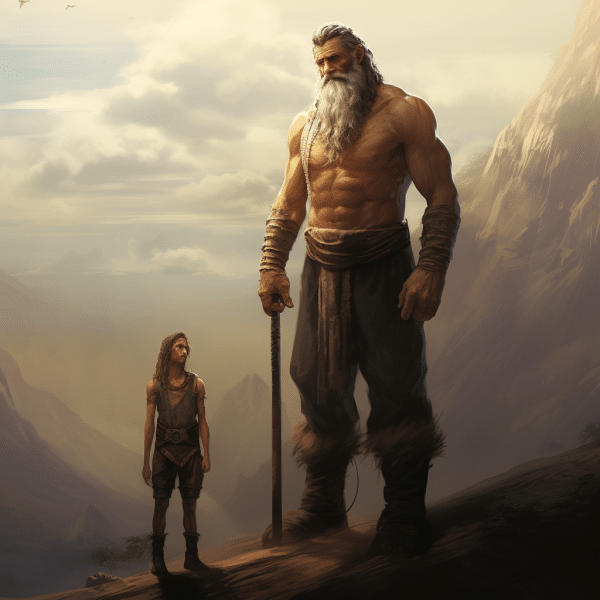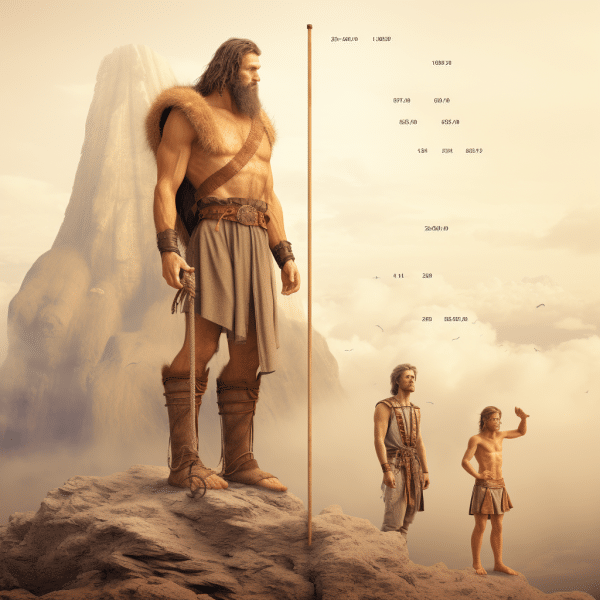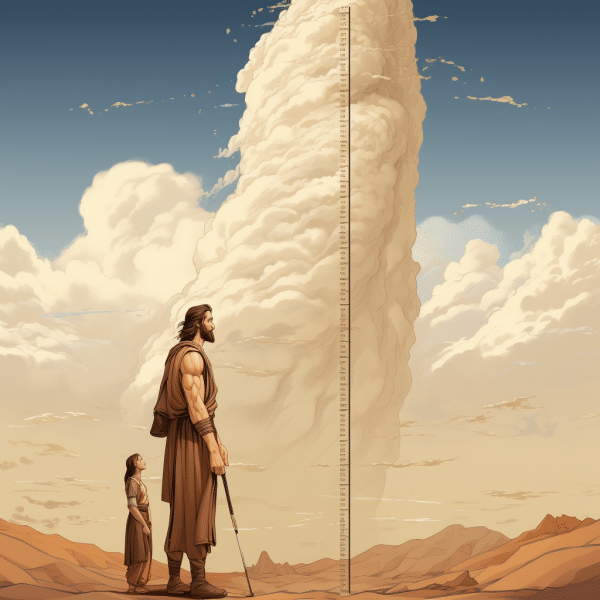

In the Bible, Adam’s Height is described as an image of God, tasked with the responsibility of tending to the Garden of Eden. While his physical features are not specifically mentioned, Adam’s status as a guardian and leader of creation is emphasized. It is significant to recognize that the Bible does not provide scientific facts but rather focuses on spiritual and ethical lessons; it does not give exact depictions of historical characters.
How Tall Was Adam in The Bible?
The Bible does not give a specific measurement for the height of Adam, the first man created according to the Book of Genesis.
Biblical Evidence for Adam and Eve’s Height
When examining the Bible for clues about Adam and Eve’s height, we must consider accounts of giants found in the Old Testament shortly after their lives. Similarly, Numbers 13:30-33 divulges that many of the people living in Canaan were of considerable stature, and 2 Samuel 12:19 highlights Goliath, who was probably 9-10 feet tall.
Adam’s Height According to Islam
The Islamic tradition lends considerable credence to the idea that Adam and Eve may have had more than average height. As recorded in the hadith (Sahih al-Bukhari, Book 55, Hadith 543), Muhammad states that “Allah created Adam with a stature of 60 cubits,” which would equate to approximately 90 feet. Although existing evidence points to Adam having been a mere 8-10 feet in height, this lofty figure provides an intriguing possibility.
Who was Adam in the Bible and What is His Significance?
Adam, first mentioned in the Book of Genesis in the Bible, holds a special place within God’s creation.
His Hebrew name, “Adam”, translates to “ humanity“, signifying his role as the progenitor of humanity. Adam’s story is not merely about an individual, but instead speaks to the narrative of humanity’s relation to their creator and the consequences of disobedience.
The creation Story in the Bible: A Closer Look at the First Man and Woman
The first account portrays a grand entrance of God’s magnificent power as He uttered “Let there be light” and the like, resulting in an orderly universe. Meanwhile, the second account shows God’s special relationship with humankind, handcrafting Adam from dust and then creating Eve from his rib, bestowing upon them both the stewardship of His masterpiece, the Garden of Eden.
Combined, these two accounts provide us with a full scope of what happened during creation. We see God as the all-powerful force that formed the universe and simultaneously recognize Him as a personal God who cherishes His children and entrusts them with a divine mission—to maintain and sustain His grand work of creation.

Comparing and contrasting the biblical account of Adam’s Height creation stories from ancient civilizations
Exploring the Bible’s story of Adam in comparison to other creation myths from ancient civilization’s can bring greater insight and understanding into the Bible, its history, and the culture of its origin. From Sumerians to Egyptians, many different cultures have their own creation stories that bear noteworthy ties and distinct discrepancies with the Biblical narrative.
The most significant commonality between Adam’s account and other ancient creation accounts is the notion that a higher being was responsible for making the world and humanity. In the Bible, this authoritative figure is God, while other nations attribute the geniture of the universe to multiple gods and goddesses.
However, one major discrepancy between the biblical version of Adam and other ancient narratives is ethical principles and the concept of sin.







